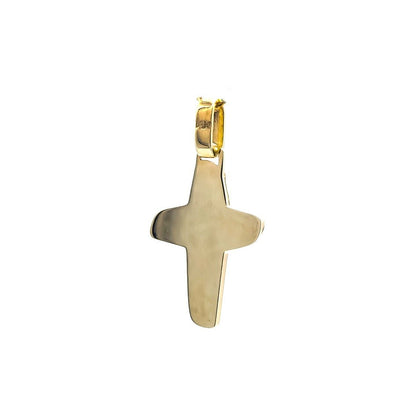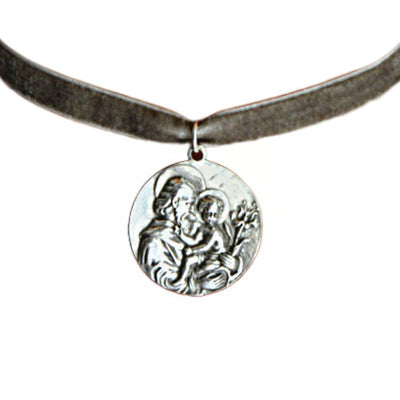Exploring the Life and Significance of Saint Benedict and His Medal
Discover the Story Behind Saint Benedict and His Iconic Medal
As we approach the celebration of Saint Benedict on July 11, you may not know much about his life. However, you may have heard about his medal or crucifix at some point. In this article, we will delve into the meaning behind the medal and take this opportunity to discuss the life of Saint Benedict, who he was as a saint, and what his teachings have left for us.
Who is Saint Benedict?
Saint Benedict is considered the patron saint of Europe, proclaimed by Pope Paul VI through the apostolic letter "Pacis nuntius." He is also recognized as the patriarch of Western monasticism for founding the Order of Saint Benedict.
Born in Nursia, Italy, in 480, Saint Benedict came from a noble family. We can mention his sister, Saint Scholastica, a saint like him among his family members.
After completing his education, he studied in Rome but decided to retreat to Subiaco and distance himself from city life. Desiring a life of prayer, he settled in a cave where he would stay for several years.
The iconography of Saint Benedict
No one knew of his existence for years until a monk discovered him. During this time, Saint Benedict grew self-knowledge and understanding of his fellow human beings.
He was proposed for the position of abbot in a nearby monastery, which he eventually accepted after much insistence. However, the monks in this monastery disagreed with his rules, and on several occasions, there were attempts to poison him for various reasons. Fortunately, he remained unharmed due to the blessings he performed over what he consumed.
He returned to Subiaco and preached the Word of God, and several people wanted to follow him, becoming his disciples.
After some years, he moved to Monte Cassino, where he initiated the construction of a monastery on the ruins of an ancient temple. In 530, he founded the Benedictine Community, aiming to spread Christianity by establishing monasteries with a self-sufficient regime, hence the motto "ora et labora" (pray and work).
Saint Benedict left us the renowned "Rule of Saint Benedict," where he reflected on his method and discipline. This rule consists of 73 chapters, guiding the precepts of monastic life. It serves as a model for collective living, emphasizing prayer and work.
His way of life has influenced other monasteries throughout history and shaped the development of Western monasticism.
He departed on March 21, 547, just a few days after his sister's death.
The Meaning of the Saint Benedict Medal
The Saint Benedict Medal is a sacramental medallion from Saint Benedict's devotion to the Cross. It dates back to ancient times, and he recommended it to his disciples to protect against evil and temptation through faith. It is widely used today, particularly by exorcist priests.
In 1742, Pope Benedict XIV approved the medal, and its blessing formula was incorporated into the Roman Rite, granting a plenary indulgence to those who wore it, following the stipulated conditions.
In 1880, commemorating the 1400th anniversary of Saint Benedict's birth, his medal was revealed, finally unveiling its meaning.
Here are the details we know about the medal:
Front Side of the Medal
The front side features the image of Saint Benedict, holding a cross in his right hand and the book of the Rules in his left hand.
Surrounding the image is the inscription "Eius in óbitu nostro preséntia muniámur," which translates to "May his presence protect us at the hour of our death."
If we observe the bottom part, on one side, there is a figure of a crow carrying a loaf of bread in its beak, symbolizing the poisoned food given to him.
On the other side is a cup, alluding to another attempt to poison him. However, when he blessed the cup, a snake emerged from it.
At the bottom of the image is another inscription, "Crux sancti patris Benedicti," meaning "Cross of the Holy Father Benedict."
Reverse Side of the Medal
On the reverse side, we find the Cross and, above it, the following inscriptions:
At the top: "Pax," which means "Peace."
On the vertical pole of the Cross: "C.S.S.M.L," which stands for "Crux Sácra Sit Mihi Lux," translating to "May the Holy Cross be my light."
On the horizontal pole: "N.D.S.M.D," which stands for "Nón Draco Sit Mihi Dux," meaning "May the dragon not be my guide."
The letters "C.S.P.B" on each side of the Cross refer to the Cross of the Holy Father Benedict.
Around the edge of the medal, in a clockwise direction, the following translations can be found:
"V.R.S." - "Vade Retro Satána" - "Go back, Satan."
"N.S.M.V" - "Non Suáde Mihi Vána" - "Do not suggest vain things to me."
"S.M.Q.L" - "Sunt Mála Quae Libas" - "The things you offer are evil."
"I.V.B" - "Ípse Venéna Bíbas" - "Drink your poison yourself."
By understanding the life of Saint Benedict and the symbolism of his medal, we can appreciate the legacy he has left behind. His teachings inspire and guide countless individuals, reminding us of the importance of prayer, work, and protection against evil.






















Leave a comment